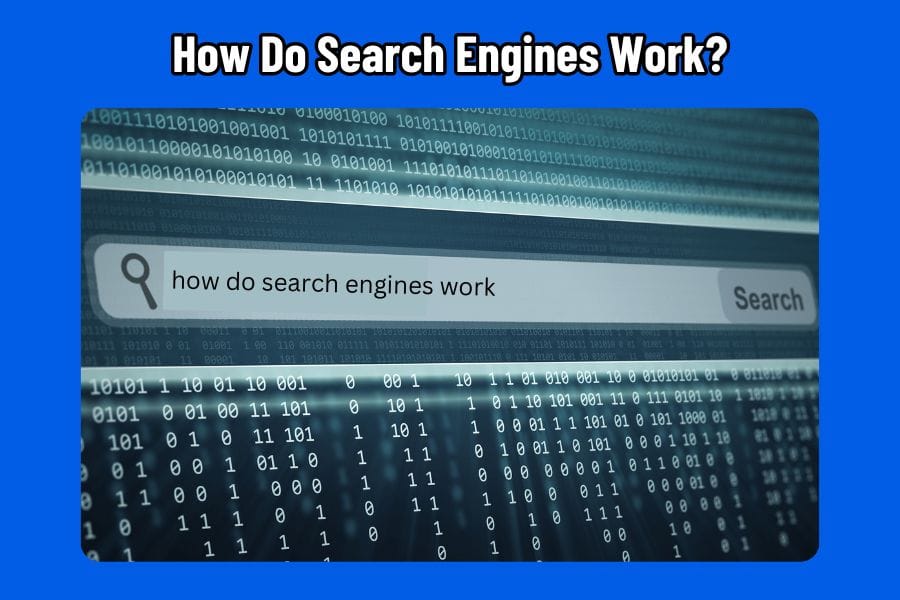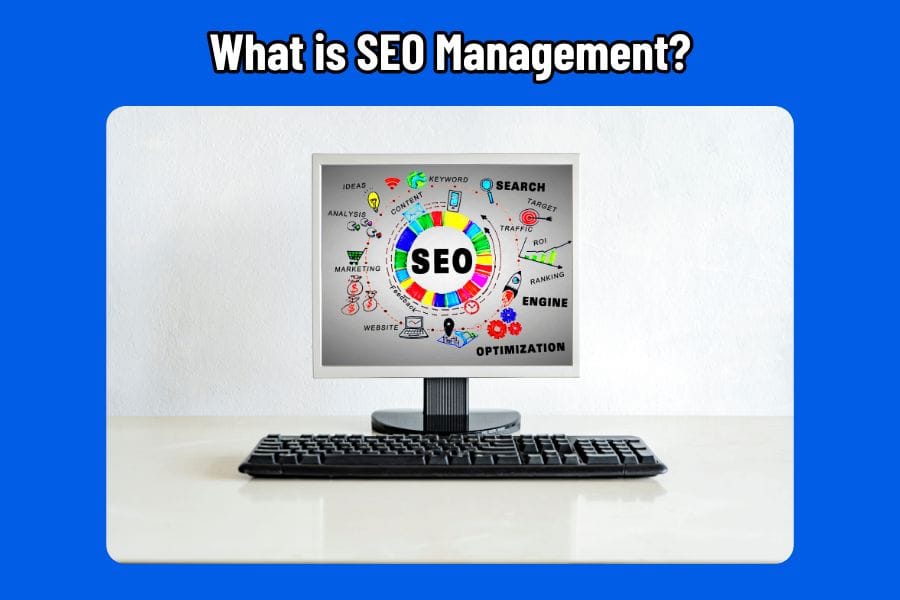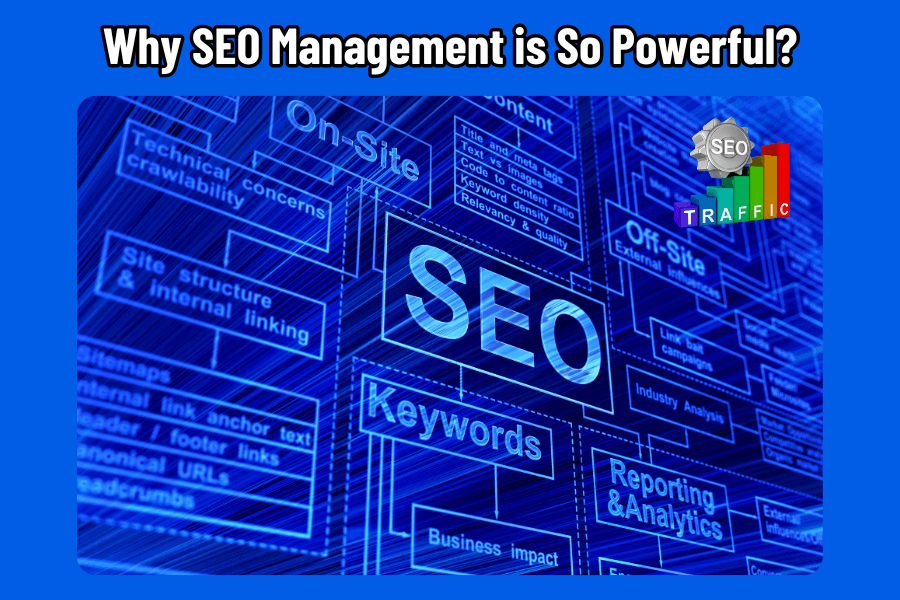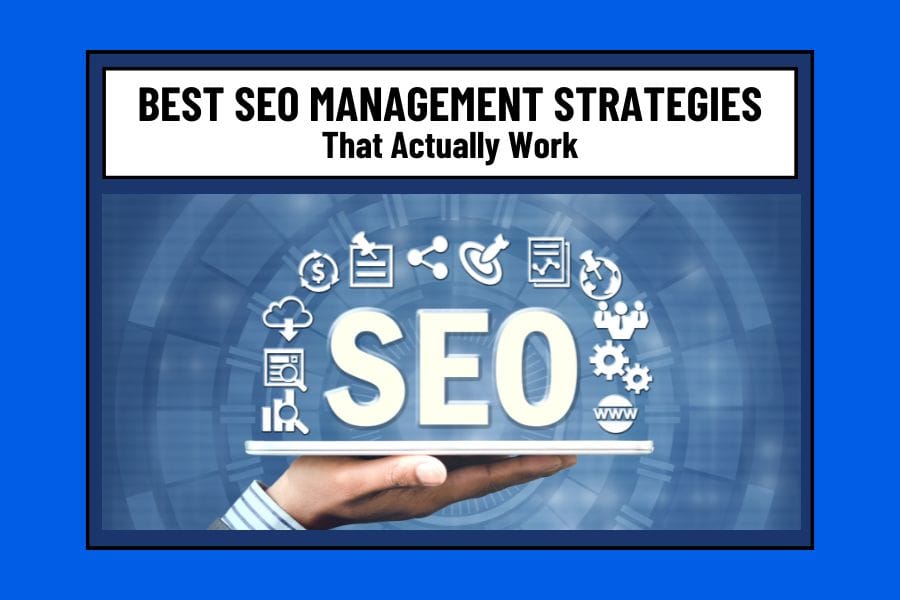SEO management—discover what it is, why it’s crucial for entrepreneurs, and how to use it to boost visibility, build your brand, and grow your online business.
Introduction
If you’re serious about growing your online business, SEO management isn’t optional—it’s essential. Without it, your website is just another drop in the vast ocean of content, struggling to be seen. With billions of searches happening daily, your potential customers are out there searching for solutions you provide. But if your site isn’t optimized, they’ll never find you. Your SEO strategy is the key to building your brand and staying competitive in today’s digital landscape.
In this post, you’ll learn exactly what SEO management is, why it’s crucial for entrepreneurs, and how to implement it effectively. From keyword research and content optimization to technical SEO and link building, we’ll break down the core components you need to get results. By the end, you’ll have a clear roadmap to enhance your website’s ranking, drive consistent traffic, and build a strong online presence. Let’s first start by understanding how search engines work. what SEO management actually involves.
How Do Search Engines Work?

Search Engines Organize the Vast Amount of Data Online
Search engines are like digital librarians, constantly scanning and organizing the vast amount of content on the internet to deliver the most relevant results to users. How do search engines like Google work? When someone searches for a keyword, search engines use crawlers (also known as spiders or bots) to scan websites, indexing their content based on relevance, authority, and usability. Then, complex algorithms analyze this data to determine which pages should appear at the top of search results. This is why SEO management is so crucial—it helps search engines understand your content and rank it higher for the right audience.
Popular Search Engines
With the rise of artificial intelligence, the number of search engines has grown significantly. However, the market is still dominated by three major players:
- Google Search – The most widely used search engine, controlling over 90% of global search traffic. Google prioritizes high-quality content, mobile-friendliness, and backlinks.
- Bing – Microsoft’s search engine, known for integrating with Windows devices and rewarding users with Microsoft Rewards for searching.
- Yahoo! – Though less dominant, Yahoo! still has a dedicated user base and relies on Bing’s search technology to display results.
Understanding how these search engines work allows you to optimize your content effectively, making it easier for potential customers to find your website. Now, let’s explore what SEO management involves.
What is SEO Management?

Understanding SEO
Imagine having the perfect business, the best products, and a website that looks amazing—but no one can find you. That’s where SEO management comes in—it’s an essential part of your digital marketing strategy. It’s the strategic process of optimizing your website so that Google and other search engines rank it higher in search results, making it easier for potential customers to discover your business. Think of it as the roadmap that guides search engines (and users) straight to your content.
Effective SEO
Effective SEO management isn’t just about stuffing pages with keywords or chasing rankings. It’s about understanding search intent, optimizing your website’s technical foundation, creating high-value content, and ensuring an excellent user experience. By doing this, you attract organic traffic—the kind that doesn’t just visit but engages, converts, and returns. Now, let’s break down the essential components that make up a strong SEO strategy.
What Does SEO Management Include?
Mastering SEO management means focusing on several key elements that work together to improve your site’s performance. Here’s what you need to know:
- Keyword Research: Before you create content, you need to know what people are searching for. Keyword research helps you identify the exact terms and phrases potential customers use when looking for products, services, or solutions in your industry. It also allows you to analyze your competitors’ strategies, helping you stay ahead in the game.
- Content Creation: Once you know what your audience is searching for, you need content that provides value. High-quality, keyword-optimized content attracts visitors, keeps them engaged, and positions you as an authority in your niche. Blog posts, case studies, videos, and infographics—these are all powerful content types that drive organic traffic.
- Technical SEO: Search engines love well-structured, efficient websites. Technical SEO involves improving site speed, optimizing URL structures, managing duplicate content, and ensuring that your site is easy to crawl and index. Ignoring this aspect can cause your rankings to suffer, no matter how great your content is.
- User Experience (UX): A well-optimized website isn’t just about keywords and rankings—it’s about how users interact with your content. A clean, mobile-friendly design, fast-loading pages, and intuitive navigation all enhance UX, which, in turn, improves your rankings.
- Mobile SEO: With most searches happening on mobile devices, your site needs to be mobile-friendly. Google prioritizes mobile-optimized sites in rankings, meaning if your site isn’t optimized for mobile, you’re losing potential customers. Using a mobile SEO checklist can help ensure your site meets key mobile performance standards.
- Link Building: Earning high-quality backlinks from authoritative sources boosts your site’s credibility and rankings. The more trusted sites that link to your content, the more search engines see your website as a valuable resource. A backlink is a hyperlink from another website to yours, signaling to search engines that your content is trustworthy and relevant.
- Meta Descriptions: These short summaries appear in search results and can significantly impact click-through rates. A well-crafted meta description should include your primary keyword, offer a compelling preview of your content, and entice users to click.
- Image Optimization: Search engines can’t “see” images the way humans do, so using descriptive alt text, compressing file sizes, and adding relevant keywords to image file names helps improve visibility and page speed.
- Video Optimization: Video content is increasingly dominating search results, and optimizing it can enhance your SEO strategy. Using proper video titles, descriptions, and optimized transcripts ensures that search engines understand and rank your videos appropriately.
Each of these elements plays a vital role in creating a well-rounded SEO management strategy. When executed correctly, they help your website rank higher, drive targeted traffic, and ultimately increase conversions.
Now that you know the basic elements of SEO management, let’s dive into why it’s such a powerful tool for entrepreneurs looking to launch and scale their businesses.
Why SEO Management is So Powerful?

Increased Visibility
Imagine launching a business, but no one knows it exists. That’s exactly what happens when your website isn’t optimized for search engines. SEO management ensures your business doesn’t remain invisible in the crowded digital marketplace. By optimizing your website with relevant keywords, high-quality content, and proper technical structure, you increase your chances of ranking higher in search results. The higher you rank, the more eyes on your business. When potential customers search for what you offer, they’ll find you instead of your competitors.
Organic Traffic
Unlike paid ads that stop delivering once you stop spending, SEO management helps generate organic traffic—visitors who find your site naturally through search engines. These users are actively searching for information, products, or services related to your niche, making them highly valuable leads. The best part? Organic traffic is sustainable. Once you optimize your site and build authority, your content continues to work for you, attracting customers 24/7 without the ongoing cost of ads.
Cost-Effective Marketing
Every entrepreneur knows that marketing can get expensive fast. Paid ads, social media promotions, and influencer collaborations all require continuous investment. But SEO management offers a long-term solution that keeps delivering results without constantly draining your budget. As a form of cost-effective marketing, SEO allows you to reach a vast audience at a fraction of what you’d spend on traditional advertising. Once you rank well, you continue to attract visitors without paying for every click, making SEO marketing one of the highest-ROI digital marketing strategies available.
Brand Credibility
People trust search engines. If your website appears on the first page of Google, users automatically see you as more credible and authoritative. High rankings signal that your business is relevant, trustworthy, and well-established. In contrast, a business buried on page three, probably won’t get any taffic and might as well not exist. SEO management is the best way to strengthen your brand’s credibility.
Targeted Audience Reach
Not all traffic is valuable traffic. You don’t just want visitors—you want the right visitors. That’s where SEO management excels. By targeting specific keywords related to your industry, products, and customer pain points, SEO ensures you attract users who are actively searching for what you offer. This means higher engagement, more leads, and ultimately, more conversions. With the right SEO strategy, you aren’t just getting more traffic—you’re getting traffic that actually converts into customers.
Local SEO Potential
If you run a business with a local focus, local SEO is a game-changer. Optimizing for location-based keywords, creating Google My Business listings, and gathering positive online reviews can help your business appear in local searches. Whether you own a brick-and-mortar shop or provide local services, local SEO ensures that when someone in your local area searches for what you offer, your business appears at the top of the results.
Competitive Advantage
In today’s digital world, ranking high on search engines isn’t just an advantage—it’s a necessity. Your competitors are already investing in SEO management, and if you don’t, you’re handing them potential customers. A well-executed SEO strategy helps you outrank competitors, gain more visibility, and establish your business as an industry leader. The businesses that dominate search results today are the ones that have the best chance to thrive in the future.
A powerful SEO content strategy is your your biggest asset. Before you get started, you need to understand and set some goals. Let’s talk your content goals next.
Understanding your SEO Content Goals

Build Trust
Trust is everything in the digital world. If your audience doesn’t trust your website, they won’t stick around, and search engines will take notice. That’s why SEO management isn’t just about rankings—it’s about credibility. Google prioritizes websites that provide valuable, trustworthy content, and users do the same. To build trust, you need high-quality content, secure browsing (HTTPS), and a solid reputation backed by positive reviews and authoritative backlinks. The more reliable your site appears, the better it performs in search results and the more confidence visitors have in your brand.
Provide High Value Content
If your content isn’t valuable and easy to read, it won’t matter how optimized it is—people will leave your site within seconds. SEO management isn’t just about ranking higher; it’s about keeping visitors engaged, reducing bounce rates and signaling to search engines that your content is valuable. The ultimate goal isn’t just to bring users to your site—it’s to keep them there and guide them seamlessly toward taking action.
Positive User Experience
Search engines are obsessed with user experience, and so should you. No matter how optimized your content is, if your website is slow, hard to navigate, or cluttered with pop-ups, visitors will leave—and Google will push you down in rankings. A well-structured site with fast loading times, mobile responsiveness, and intuitive navigation enhances user experience, keeping visitors engaged and increasing conversions.
Ethical SEO: Good Standing with Search Engines
Shortcuts in SEO rarely lead to long-term success. Some businesses attempt to manipulate rankings using black-hat tactics like keyword stuffing, cloaking, or buying backlinks. But Google is smarter than ever, and these tactics often lead to penalties that can crush your rankings overnight. Practicing ethical SEO—focusing on high-quality content, proper keyword use, and earning organic backlinks—ensures your website remains in good standing with search engines. Ethical AEo always wins. Prioritize ethical strategies and build a sustainable SEO foundation that continues delivering results over time.
Now you know what SEO management is, why it’s so powerful and some key SEO goals. But where should you start? Let’s break it down and begin with your content framework.
How to Establish your Content Framework?

Selecting the Right Keywords
Your SEO management strategy starts with choosing the right focus keyword—your content framework and the foundation of every successful blog post or webpage. But it’s not just about picking a random keyword and stuffing it into your content. You need a keyword that has high search volume, low-to-medium competition, and direct relevance to your audience’s needs. The right keyword ensures that when potential customers search for information related to your business, they find you instead of your competitors.
In addition you want to select the best secondary keywords that will compliment your focus keyword and help you build your outline. Keyword research tools like Mangools, Google Keyword Planner, Ahrefs, and SEMrush can help you identify valuable keywords. Remember, every blog post should have a unique focus keyword. No duplicates. Each piece of content should target a specific search intent, ensuring your site covers a wide range of relevant topics.
Creating your Outline
A well-structured blog post outline is your content roadmap, helping both search engines and readers easily navigate your content. A great outline ensures your post is about your focus keyword, engaging, well-organized, and optimized for search rankings. Start with a compelling headline that includes your focus keyword and sparks curiosity. Your introduction should hook the reader by addressing a pain point or offering a solution, while naturally incorporating relevant keywords.
Break your content into well-defined main points, using H2 and H3 headings to improve readability and SEO. Each section should have clear subheadings that guide the reader while reinforcing search engine optimization with secondary keywords. Support your main points with data, examples, or actionable insights to add depth and credibility. Wrap up with a focused conclusion that summarizes key takeaways. Finally, add a high-value FAQ section, answering common questions related to your topic—this helps capture search queries and boosts your post’s visibility in search results.
Now you know the 2 key elements of your content framework, next, we need to talk about your SEO content structure.
Pillar-Cluster Content Strategy

Pillar Content
Think of pillar content as the backbone of your website’s content strategy. It’s a long-form, in-depth guide that covers a broad topic in detail, designed to provide immense value while ranking well in search engines. Pillar content serves as an authoritative resource that links to multiple related subtopics, making it easier for users to navigate your site and for search engines to understand your content hierarchy.
For example, if your website is about SEO management, a pillar post could be “The Ultimate Guide to SEO Strategies for Entrepreneurs.” Within that post, you’d link to smaller, more detailed posts covering specific aspects like keyword research, on-page optimization, and link building. This structure not only helps readers find the information they need but also strengthens your SEO by improving internal linking and boosting page authority.
Topic Clusters
A single piece of content won’t cover everything your audience needs to know. That’s where creating content clusters comes in. Instead of treating each blog post as an isolated entity, topic clusters group related content under a central theme, making it easier for search engines to connect your pages and improve rankings.
For instance, if your pillar content is “The Ultimate Guide to SEO Strategies for Entrepreneurs,” the supporting topic cluster content might include:
- “How to Perform Keyword Research for Maximum SEO Impact”
- “10 Common SEO Mistakes and How to Avoid Them”
- “Link Building Strategies That Actually Work”
By interlinking these posts, you create a content ecosystem that keeps visitors engaged and signals to search engines that your site is a trusted resource on the subject.
Other Common Content Formats
Always develop high-value content that answers search queries, provides solutions, and keeps readers engaged. Every SEO management plan should include multiple content formats to attract different audience segments and improve engagement. Consider integrating:
- Case Studies: Real-world success stories that showcase how your strategies or products have helped businesses grow.
- User-Generated Content: Testimonials, social media posts, and community discussions that add authenticity to your brand.
- Interviews: Expert insights that build credibility and authority in your industry.
- How-To Guides & Tutorials: Step-by-step content that provides actionable solutions to common problems.
- Infographics: Visually engaging, shareable content that simplifies complex information.
- Product Reviews: In-depth analysis and comparisons of tools, software, or services related to your niche.
- Giveaways & Contests: Incentives that drive engagement and increase brand awareness.
- Checklists & Cheat Sheets: Quick, actionable resources that provide instant value to readers.
- Surveys & Polls: Interactive content that encourages audience participation.
- Quotes & Roundups: Curated expert opinions that reinforce your content’s authority.
By strategically combining pillar content, content clusters, and diverse formats, you create a SEO management strategy that not only improves rankings but also enhances user experience and engagement.
Next, you need strong SEO titles, let’s look at how to optimize your titles.
How to SEO Optimize your Titles

Understanding SEO/URL Titles and Page Titles
Your SEO management strategy isn’t complete without optimizing your titles. The SEO title (also known as the meta title) is the clickable headline that appears in search engine results. It’s one of the first things users see when deciding whether to click on your page. A well-crafted SEO title improves your click-through rate (CTR) and helps search engines understand the topic of your content.
The URL title (or slug) is the part of your webpage’s URL that comes after the domain name. It should be short, relevant, and optimized with your focus keyword to improve rankings and usability. While the SEO title is primarily for grabbing attention, the URL title helps search engines and users understand what your page is about at a glance. Both need to be carefully crafted to maximize visibility and engagement.
Steps to Optimize your Titles
Optimizing your SEO and URL titles involves several key steps:
Step 1. Focus Keyword: Keyword-rich titles, use your focus keyword at the beginning of your title. Search engines prioritize keywords placed early in titles. For example, instead of “How Entrepreneurs Can Benefit from SEO Management,” use this version “SEO Management: How Entrepreneurs Can Benefit.”
Step 2. Maximum Characters: Keep your SEO title under 75 characters. Titles that exceed this limit get cut off in search results. Shorter, concise titles are more readable and effective.
Step 3. Include a Positive Sentiment or Negative Emotion: Emotional triggers influence click-through rates. Words like “best,” “ultimate,” or “proven” create a sense of trust and confidence, while negative sentiment words like “mistakes,” “avoid,” or “never” spark curiosity.
Step 4. Use a Power Word to Drive Engagement: Power words evoke strong emotions and encourage action. Examples include “secret,” “essential,” “insider,” “unstoppable,” or “exclusive.” These words add urgency and appeal to your title.
Step 5. Incorporate a Number When Possible: Numbers make titles more specific and compelling. Studies show that list-based titles (e.g., “7 SEO Management Strategies That Actually Work”) tend to perform better because they promise clear, structured content.
It’s not always possible to incorporate all elements in your titles. But, when combined strategically, these elements create titles that not only attract attention but also improve your rankings.
Now, let’s dive into on page optimization and how to optimize content that ranks and converts.
How to Optimize your On Page SEO Content?

How to Optimize for Users and Search Engines?
Optimizing your content goes beyond just inserting keywords—it’s about creating value while ensuring your page is structured for both users and search engines. Here’s how:
Step 1. Table of Contents: Use TOC to break down your content. This helps readers navigate easily, especially for long-form pillar content. It also improves search engines’ ability to index and understand your post.
Step 2. Better Readability: Use short and concise paragraphs. Walls of text scare readers away. Keep sentences and paragraphs short for a smooth reading experience.
Step3. Use Your Focus Keyword at the Beginning of Your Content: Search engines give more weight to keywords placed early in the content. Make sure your SEO management focus keyword appears naturally in the introduction.
Step 4. Use Your Focus Keyword Throughout the Content (Aim for 1% Keyword Density): Overusing keywords looks spammy, but strategic placement ensures your content is relevant without overdoing it.
Step 5: Use Secondary Keywords: use each secondary keyword at least once throughout the content to reinforce your outline, search engine optimization and compliment your focus keyword.
Step 6. Ensure Content is 600+ Words for Subtopic Posts and 2,500+ Words for Pillar Posts: Keep in mind, longer, high-value content ranks better in search engines. Google prioritizes comprehensive content that fully answers a user’s query.
Step 7. Use Your Focus Keyword in Some Subheadings (H2, H3, H4): Search engines scan headings for topic relevance. Placing your focus keyword in a few subheadings strengthens your SEO.
Step 8. Add an Image with Your Focus Keyword as Alt Text: Search engines can’t “see” images, so alt text helps them understand the image’s context while improving accessibility. Use your focus keyword as Alt text to accurately describe the image. Make sure image is optimized, see Step 9.
Step 9. Add Additional Images and/or Videos to Make Your Content Appealing: Relevant multimedia content improves engagement, keeps visitors on your page longer, and boosts SEO rankings. Make sure images are optimized. Image optimization is the process of refining an image’s format, size, and resolution to maintain high-quality visuals while minimizing file size. The goal is to enhance website performance by ensuring fast loading speeds without sacrificing image clarity. This involves compressing files, selecting the right format, and using techniques like lazy loading to strike the perfect balance between visual appeal and efficient web performance.
Step 10. Link Out to Trusted External Resources: Citing authoritative sources improves credibility and provides more value to your audience. Google also rewards well-researched content.
Step 11. Add Dofollow Links Pointing to External Resources: These links pass SEO authority from your site to another, signaling to search engines that you’re citing high-quality sources. This also helps build relationships with authoritative websites.
Step 12. Add Internal Links in Your Content: Linking to other relevant pages on your site keeps users engaged and improves SEO by distributing page authority throughout your website.
When your content is structured properly, easy to read, and fully optimized, it’s more likely to rank higher and attract quality traffic. Now, let’s explore how to craft an SEO-optimized meta description that encourages clicks and boosts visibility.
What is an SEO Meta Description?
Your SEO meta description is a principal part of your SEO management strategy. It’s a short but powerful snippet that appears under your page title in search results. It serves as a preview of your content, giving users a quick reason to click on your link instead of your competitor’s. While meta descriptions don’t directly impact rankings, they play a crucial role in search engine visibility by improving your click-through rate (CTR).
A well-crafted meta description includes three key elements:
Step 1. Focus Keyword: Place your [Focus Keyword] at the beginning signals topic relevance to search engines and users.
Step 2. Compelling Value Proposition: The description should highlight what the reader will gain by clicking on your link and reading your post.
Step 3. Call-to-Action (CTA): Encouraging action with phrases like “Learn more,” “Discover the best strategies,” or “Start optimizing today” increases engagement.
How to Optimize your SEO Meta Description?
Writing an effective meta description requires precision. You only have 160 characters to make an impact, so every word counts.
Example used for this post: (160 characters)
“SEO management , discover what it is, why it’s crucial for entrepreneurs, and how to implement it effectively to build your brand and grow your online business.”
This approach ensures your meta description is working to attract clicks while optimizing it for search engines.
Now you have the basic steps regarding content SEO management. Let’s close things out with our recap so you can get started implementing these SEO strategies today.
Recap: the SEO Roadmap
SEO Continues Working for you Long Term
By now, you understand why SEO management isn’t just a marketing tactic—it’s a game-changer for entrepreneurs looking to build a sustainable online presence. From increasing visibility and driving organic traffic to improving user experience and boosting credibility, SEO gives you a competitive edge in the digital marketplace. Unlike paid ads that stop generating traffic once the budget runs out, SEO continues to work for you over time, attracting high-intent visitors who are actively searching for what you offer.
SEO management may seem complex, but here’s the good news—you now have a clear, actionable roadmap to follow. By implementing the key strategies covered in this post, you’ll not only boost your online presence but also gain a competitive edge over most of your rivals.
Digital Content: Interesting Fact
Here’s an eye-opening fact: The average person spends 7 hours daily consuming digital content. That means your audience is online, searching for answers, solutions, and services. And here’s what makes SEO even more powerful—most website traffic comes from organic search results, not paid ads. If you’re not optimizing your site for search engines, you’re leaving a massive opportunity untapped.
You still may have some questions, right? Let’s dive into some of the most commonly asked questions about SEO management to clear up any lingering doubts
FAQs: SEO Management
What are the top 3 ranking factors of SEO?
Answer: SEO Management
While Google’s algorithm considers hundreds of factors when ranking websites, three stand out as the most critical:
- High-Quality Content: Search engines prioritize content that is informative, relevant, and valuable to users. The more engaging and useful your content, the higher your chances of ranking well.
- Backlinks & Authority: Websites with strong backlinks from reputable sources are seen as more authoritative and trustworthy, which boosts their rankings.
- User Experience (UX) & Technical SEO: A fast-loading, mobile-friendly site with easy navigation and optimized structure keeps users engaged and helps search engines crawl and index your pages efficiently.
What are the basic steps for SEO?
Answer: SEO Management
SEO management isn’t a one-time task—it’s an ongoing process. Here are some key tips to get you started:
- Conduct Keyword Research: Identify what your audience is searching for and select relevant focus keywords.
- Optimize On-Page Elements: Use focus keywords in your titles, headings, meta descriptions, and content naturally.
- Improve Technical SEO: Ensure your site is mobile-friendly, fast-loading, and free of errors.
- Create High-Quality Content: Publish valuable, engaging, and optimized content regularly.
- Build Backlinks: Earn high-quality links from authoritative sources to increase your website’s credibility.
- Monitor and Optimize: Use tools like Google Analytics and Search Console to track performance and adjust strategies as needed.
What does focus keyword density mean?
Answer: SEO Management
Focus keyword density refers to the percentage of times your focus keyword appears in your content compared to the total word count. While there’s no strict rule, maintaining a 1% keyword density ensures natural readability without over-optimization. The key is to place your keyword strategically—in the title, first 100 words, headings, and meta description—while avoiding excessive repetition that could trigger search engine penalties.
What is link building?
Answer: SEO Management
Link building is the process of acquiring hyperlinks from other websites to your own. These links act as endorsements, signaling to search engines that your site is credible and valuable. Strong link-building should be a key part of your long term SEO management strategy to improve your domain authority and help rank your website higher in search results.
What are Dofollow Links?
Answer: SEO Management
Dofollow links are backlinks that pass SEO authority (or “link juice”) from one site to another. They help improve your rankings by signaling to search engines that your site is trustworthy and relevant. When earning backlinks, aim for dofollow links from high-authority websites to boost your site’s credibility.
What is ethical SEO?
Ethical SEO, also known as white-hat SEO, refers to search engine optimization strategies that comply with Google’s guidelines. It focuses on quality content, user experience, and natural link-building rather than manipulative tactics like keyword stuffing, link spamming, or cloaking. Ethical SEO builds long-term success and keeps your website safe from penalties.
Attention Entrepreneurs
Mastering SEO management requires consistent effort, but the rewards—higher rankings, organic traffic, and business growth—are well worth it. Now it’s time to start optimizing your website for long-term success. The foundation of your success begins with choosing the right focus keyword and secondary keywords. Here’s one of the top [Keyword Tools].🚀





